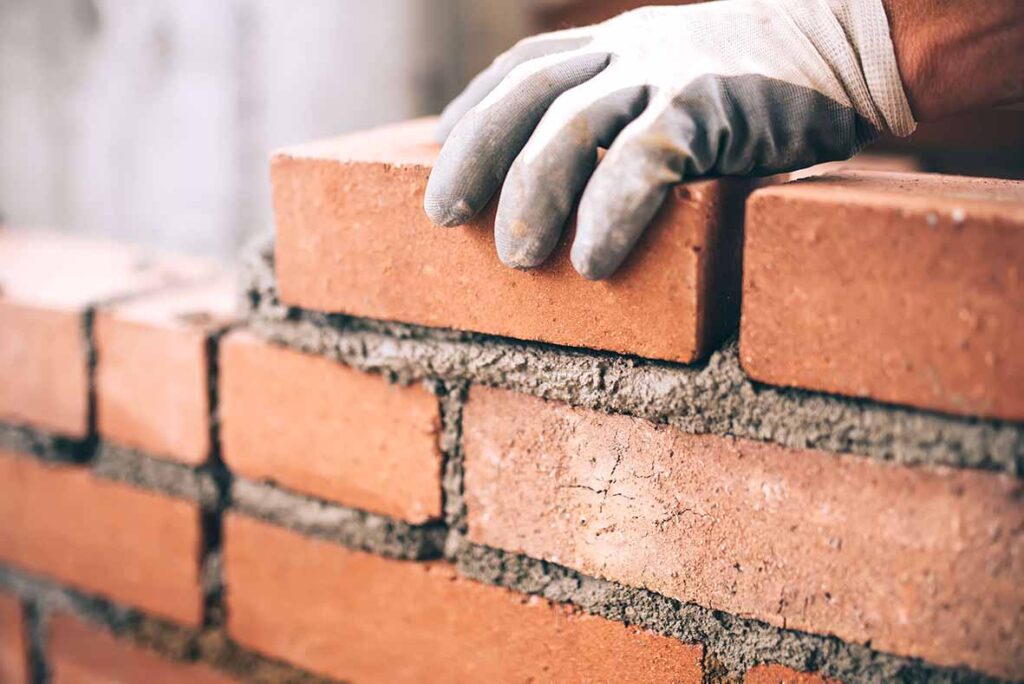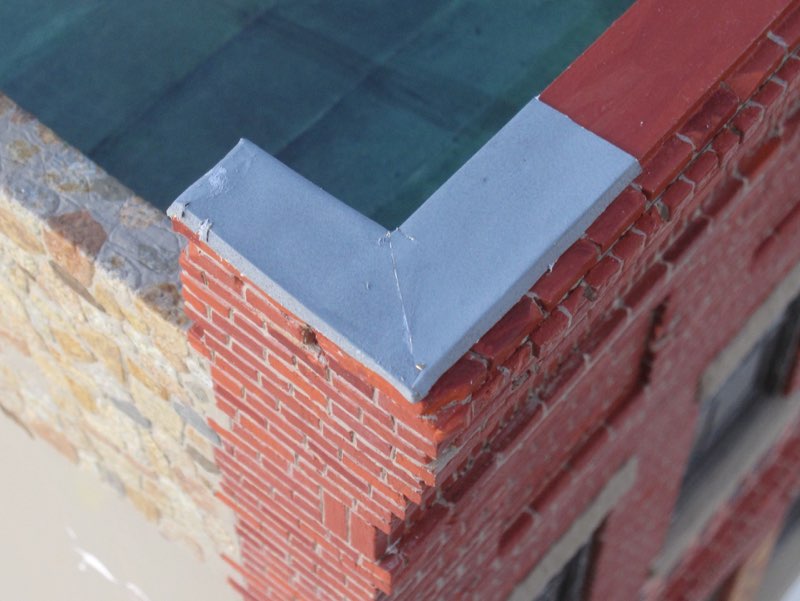If you have a brick wall and are wondering how to give it a polished and finished look, you’ve come to the right place. The top of a brick wall is an important element that not only adds aesthetic appeal but also provides protection against water damage.
Embracing a spectrum of options ranging from capping and parapet walls to decorative brickwork, mortar fillets, and paint, and finally culminating with the addition of railings, each approach seamlessly weaves together a tapestry of functionality and aesthetics.
Fortunately, here, you will get to learn the methods for your brick wall. Let’s dive in and explore the various ways to finish the top of a brick wall.
How to finish the top of a brick wall: Creative Options for Function and Style

Capping or Coping: To begin with, one of the most common methods involves placing a cap or coping on the top of the brick wall. Notably, these caps provide not only protection against moisture infiltration but also a polished appearance.
Additionally, caps can be crafted from diverse materials such as concrete, stone, brick, or metal. Importantly, they are intentionally designed to slightly overhang the wall’s edge, effectively diverting water away from the underlying brickwork. This technique safeguards the structural integrity of the wall while providing a neat finish.
Parapet Wall: In scenarios where the brick wall functions as a parapet, extending above a building’s roofline or perimeter, the construction of a parapet wall emerges as a viable and strategic choice. This approach entails extending the brickwork vertically, a process that frequently involves incorporating decorative detailing to establish both an attractive and utilitarian barrier.
Importantly, this parapet wall not only serves as a protective enclosure, but also significantly contributes to the architectural aesthetics of the entire structure.
Decorative Brickwork: For individuals seeking ornamental enhancements, the top of the brick wall presents an opportunity for creative expression. Through the application of specific brick patterns or design elements, a realm of possibilities opens up.
In this creative endeavor, techniques such as corbelling, where bricks gradually project outward, or the incorporation of dentils—small rectangular blocks—can be employed. These architectural flourishes, thoughtfully integrated, serve to infuse the wall with heightened visual intrigue and imbue it with a truly distinctive character.
As a result, the wall undergoes a transformative process, evolving into a captivating and alluring architectural feature.
Paint or Coating: Depending on the desired outcome, the upper surface of the brick wall can be painted or coated with suitable materials. Painting introduces color variation while also providing an additional layer of protection.
On the other hand, applying coatings like waterproof sealants or elastomeric finishes can bolster the wall’s resistance to weather elements, ultimately enhancing its longevity.
Mortar Fillet: An alternative option that warrants consideration involves the creation of a mortar fillet or sloping mortar joint at the wall’s crest. By adopting this approach, the mortar joint is intentionally tapered, a design choice that facilitates the effective diversion of water away from the brickwork.
Consequently, the outcome is a clean and straightforward finish. This finish not only acts as a deterrent against water accumulation but also serves as a means of preserving the wall’s structural integrity over time.
Railings or Fencing: At last, In specific instances where the brick wall serves as a boundary or security feature, the strategic approach of complementing it with railings or fencing becomes particularly relevant. These elements, when thoughtfully integrated, offer enhanced utility and functionality to the wall.
Further, they can be securely affixed to the brickwork, ensuring a cohesive and integrated design. By doing so, the wall’s effectiveness as a boundary or security measure is further heightened, ultimately contributing to a comprehensive and purposeful architectural solution.
FAQ
What is the top layer of a brick wall called?
The top layer of a brick wall is commonly referred to as the “cap” or “coping.” It serves both functional and aesthetic purposes, providing protection against moisture infiltration while also giving the wall a polished appearance.
Can I paint the top of a brick wall?
Yes, painting the top of a brick wall is an option for both aesthetics and protection. Ensure you use suitable masonry paint for durability.
What can I use to cover a brick wall?
Vinyl siding is the first and most widely used material for covering brick walls. There are many different colors available for this kind of material, making it simple to pick something that would look great in your house. Although vinyl doesn’t offer the best insulating value, it is still quite advantageous.
Can I cement over brick?
Yes, you can cement over brick to create a new surface or cover the existing brickwork. This process is often referred to as “parging” or “rendering.” It involves applying a layer of cement-based mortar or stucco over the brick surface to create a smooth and uniform finish.
Do I need special tools for finishing the top of a brick wall?
Yes, Essential tools include a trowel, level, measuring tape, safety gear, and possibly a chisel and hammer for adjustments.
Is it possible to do the finishing work myself or should I hire a professional?
Yes, but It depends on your skill level and comfort with construction tasks. Simple finishes like capping can often be done by a competent DIY enthusiast, while more complex techniques might require professional expertise.
Conclusion
In the end, The finishing touches put on the top surface of a brick wall mark the completion of the building process. As our investigation comes to a close, it becomes clear that these deciding steps play a key part. Each method, from capping to parapet walls, decorative brickwork to mortar fillets, and paint to railings, delivers a special fusion of aesthetics and utility.
Moreover, These finishing methods not only protect the wall from moisture and deterioration but also give it new life and turn it into a work of architecture.

